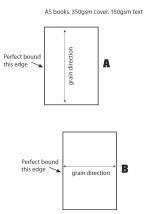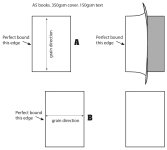BigSi
Well-known member
It's been quite awhile since I have done any perfect bound books. A or B for grain direction. (see attached) I don't want the covers to curl when completed.
Sorry! I know a real basic question, (I shouldn't have to ask). thanks Simon
Sorry! I know a real basic question, (I shouldn't have to ask). thanks Simon















